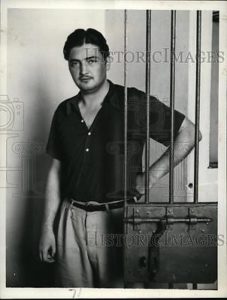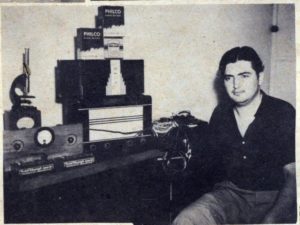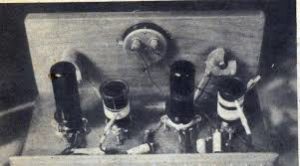 HEINZ AUGUST KUNNING, EL ESPÍA ALEMÁN FUSILADO EN CUBA.
HEINZ AUGUST KUNNING, EL ESPÍA ALEMÁN FUSILADO EN CUBA.
Heinz August Kunning, desembarco en Cuba a mediados del año 1941, venía asignado por el mando alemán para dirigir una red de espías que enviaban información desde la Habana, Cuba al mando Hitleriano. Desde aquí debía informar al alto mando berlinés sobre la entrada y salida de buques mercantes y de guerra; reportaría asimismo sobre la economía y la situación política y social del país y comunicaría las direcciones particulares de las figuras principales del gobierno.
Cuba entró en la Segunda Guerra Mundial el 9 de diciembre de 1941. Kunning tenía entonces unos 30 años de edad. Fotos que se conservan lo muestran como un hombre ligeramente grueso, de perfil afilado y una cabellera abundante de esas que parecen brotar desde la frente misma.
Los que lo conocieron lo recuerdan como una persona fría y de pocas palabras, pero amable, bien vestido y de buenos modales. Dominaba el inglés y el español y había sido entrenado cuidadosamente para su tarea, que antes cumplió con éxito en otros países.
Para su labor de inteligencia, Kunning disponía de un potente aparato de radio que le permitía recibir y transmitir mensajes, una antena de doble línea y dos manipuladores telegráficos, y como también pasaría información por la vía epistolar, se valdría de tinta simpática invisible. Parece ser que él fue el jefe, o al menos el centro, de la red de espías nazis en la Isla. Muchas de las informaciones que allegó y transmitió le cayeron en las manos con una facilidad pasmosa. Se las suministraban marineros, prostitutas y obreros portuarios a los que, entre trago y trago, se las arreglaba para tirarles de la lengua.
Si en el mar estuvo lo más notable de la participación cubana en la Segunda Guerra Mundial, en el mar Cuba sufrió también las mayores pérdidas. La información suministrada por Kunning desde una casa de huéspedes de la calle Teniente Rey, en La Habana dio por resultado el hundimiento de varios de nuestros barcos con la muerte consiguiente de decenas de marineros y la destrucción de casi la totalidad de la flota mercante cubana.
Pero no operaría impunemente el espía por mucho tiempo. Los servicios de contrainteligencia norteamericano y británico establecieron en las Bermudas una oficina que filtraba la correspondencia que salía desde América hacia otros continentes.
SIGUIENDO EL RASTRO DEL ESPIONAJE.
Una carta impuesta en La Habana y dirigida a un connotado falangista español llamó la atención de agentes de esa entidad. Abrieron el sobre y el análisis del papel reveló un mensaje en clave escrito con tinta invisible. Fue entonces que a la sede del Servicio de Investigaciones de Actividades Enemigas (SIAE) sito en la calle Sarabia, en el Cerro, y bajo la dirección del capitán Mariano Faget, llegaron oficiales norteamericanos y británicos que revisaban la correspondencia en busca de mensajes para el enemigo.
Un avión equipado para detectar ondas radiales en clave y precisar con mayor o menor exactitud su procedencia, comenzó a sobrevolar La Habana hasta que se concluyó que la señal se emitía en una zona comprendida entre Belascoaín y los muelles.
La contrainteligencia cubana hacía lo suyo y trataba de identificar a todas las personas que en dicha área recibían dinero del exterior. Fue así que el cabo Pedro Luis Gutiérrez, un comunista infiltrado en el SIAE, encontró en la sucursal del Banco de Boston, en Cuatro Caminos, una tarjeta firmada que daba cuenta de un dinero recibido. Se fue con ella al Ministerio de Comunicaciones en el convento de San Francisco, donde también radicaba el Correo Central, y se la mostró a todos los carteros con la esperanza de que alguno recordara la rúbrica.
El cartero José Francisco Rojo recordó que aquella firma correspondía a uno de los inquilinos de la casa de huéspedes de la calle Teniente Rey, a quien enviaban dinero de manera habitual. El cabo Gutiérrez pidió a Rojo que le entregara una carta certificada a fin de contrastar la firma del recibo de entrega con la de la tarjeta.
Coincidían y con esa certeza lo detuvo. Heinz August Kunning reconoció su culpabilidad. El 19 de septiembre de 1942 el Tribunal de Urgencia de La Habana lo sentenció a muerte.
Kunning fue recluido en el Castillo del Príncipe desde donde espero sus últimas horas antes de ser ejecutado. Cuando vio acercarse a los que lo conducirían al paredón de fusilamiento, en los fosos del Castillo del Príncipe, Heinz August Kunning se puso de pie y pidió a su oponente que accediera a dejar tabla aquella partida de ajedrez que la fuerza de las circunstancias le impediría concluir y, sereno, caminó hacia su destino para situarse en posición de firme ante la escuadra de fusileros que acabaría con su vida.
Fue inhumado en la necrópolis de Colón bajo un nombre supuesto y sus restos se repatriaron a Alemania en 1953.
 HEINZ AUGUST KUNNING, THE GERMAN SPY FIRED SQUAD IN CUBA.
HEINZ AUGUST KUNNING, THE GERMAN SPY FIRED SQUAD IN CUBA.
Heinz August Kunning, disembarked in Cuba in mid-1941, was assigned by the German command to direct a network of spies who sent information from Havana, Cuba under Hitler’s command. From here he had to inform the Berlin high command about the entry and exit of merchant and war ships; it would also report on the economy and the political and social situation of the country and would communicate the particular addresses of the main figures of the government.
Cuba entered the Second World War on December 9, 1941. Kunning was then about 30 years old. Photos that are preserved show him as a slightly thick man, with a sharp profile and abundant hair of those that seem to sprout from the forehead itself.
Those who knew him remember him as a cold person with few words, but friendly, well dressed and with good manners. He was fluent in English and Spanish and had been carefully trained for his task, which he previously accomplished successfully in other countries.
For his intelligence work, Kunning had a powerful radio device that allowed him to receive and transmit messages, a double-line antenna and two telegraphic manipulators, and since he would also pass information through the epistolary way, he would use invisible sympathetic ink. It seems that he was the boss, or at least the center, of the network of Nazi spies on the island. Many of the information he gathered and transmitted fell into his hands with astonishing ease. They were supplied by sailors, prostitutes and dockworkers who, between drinks, managed to pull their tongues.
If in the sea was the most notable of the Cuban participation in the Second World War, in the sea Cuba also suffered the greatest losses. The information provided by Kunning from a guest house on Teniente Rey Street, in Havana, resulted in the sinking of several of our ships with the consequent death of dozens of sailors and the destruction of almost the entire Cuban merchant fleet.
But the spy would not operate with impunity for long. The American and British counterintelligence services established an office in Bermuda that filtered correspondence that flowed from America to other continents.
A letter imposed in Havana and addressed to a connoted Spanish Falangist drew the attention of agents of that entity. They opened the envelope and the analysis of the paper revealed a coded message written in invisible ink. It was then that the headquarters of the Investigative Service for Enemy Activities (SIAE) was located on Sarabia Street, on the Hill, and under the direction of Captain Mariano Faget, American and British officers arrived to review the correspondence in search of messages for the enemy.
A plane equipped to detect radial waves in code and to specify with more or less accuracy its origin, began to fly over Havana until it was concluded that the signal was emitted in an area between Belascoaín and the docks.
The Cuban counterintelligence did its thing and tried to identify all the people in that area who received money from abroad. So it was that Corporal Pedro Luis Gutiérrez, a Communist infiltrated in the SIAE, found in the branch of the Bank of Boston, in Cuatro Caminos, a signed card that accounted for money received. He went with her to the Ministry of Communications in the convent of San Francisco, where the Central Post Office was also located, and showed it to all the postmen with the hope that someone would remember the rubric.
The postman Jose Francisco Rojo remembered that that signature corresponded to one of the tenants of the house of guests of the Teniente Rey street, to whom they sent money of habitual way. Corporal Gutiérrez asked Rojo to give him a certified letter in order to contrast the signature of the delivery receipt with the one on the card.
They coincided and with that certainty stopped him. Heinz August Kunning acknowledged his guilt. On September 19, 1942, the Urgent Court of Havana sentenced him to death.
Kunning was imprisoned in the Prince’s Castle from where I await his last hours before being executed. When he saw those who would lead him to the firing squad, in the moats of the Prince’s Castle, Heinz August Kunning stood up and asked his opponent to agree to leave that chess game that the force of circumstances would prevent to finish and, serene, he walked towards his destiny to place himself in firm position before the squad of riflemen that would end his life.
He was buried in the necropolis of Columbus under an assumed name and his remains were repatriated to Germany in 1953.
Agencies/ RHC/ Internet Photos/ Extractos/ Arnoldo Varona/ www.TheCubanHistory.com
THE CUBAN HISTORY, HOLLYWOOD.










